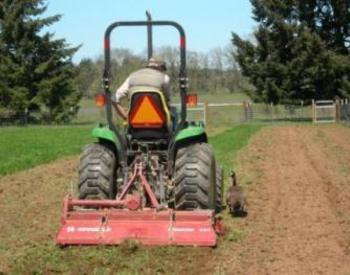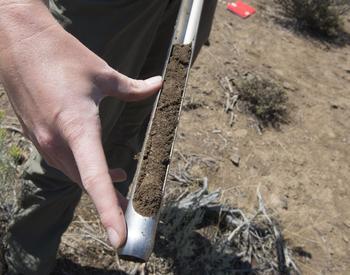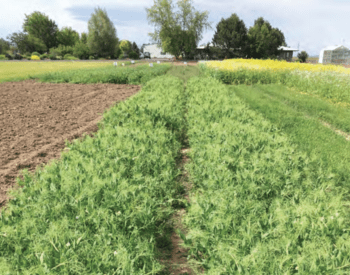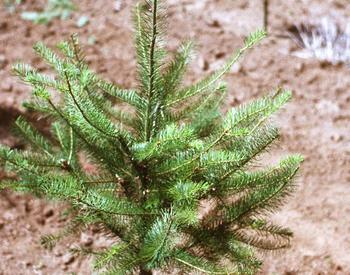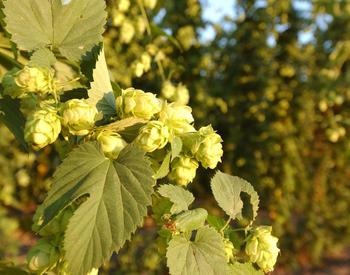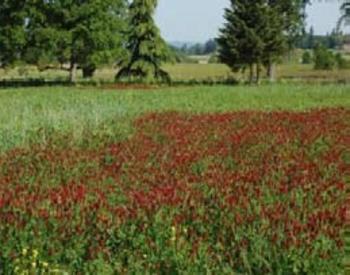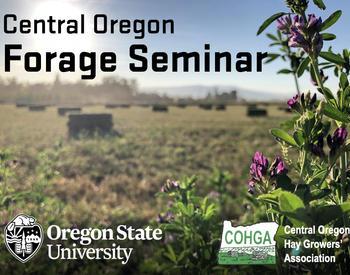Transcript
Welcome to living on the land, an award-winning source of useful information brought to you by your Oregon State University Extension Service.
In the last episode, we went over the dynamic nature of soil pH and why an imbalance can reduce your crops yields. It's vital to think of managing your soil as a constant task and as an opportunity to prevent and remedy soil pH issues. If you've used the resources we've identified in the previous episode, and your measurements have come back as either too acidic or too alkaline, then you're probably wondering what steps you can take to bring the pH back into a healthy and productive range. You have answers for you, so join me and the OSU Extension Service for tips on bringing pH balance back into your soil. Managing your soils water is one way you can help prevent acidification. Too much water in the soil carries away cations and nitrate as it drains. So prevent saturating the soil by using efficient irrigation methods. Slow release fertilizers and chemicals called nitrification inhibitors can also help by slowing ammonium conversion into nitrate. This helps prevent rapid nitrate leaching. When thinking about year to year management practices, design, crop rotations, that alternate low water using crops with high water, using crops to avoid keeping the soil saturated. Planning and managing the use of fertilizers is another important aspect to keeping soil pH within a healthy range. If you are applying elemental sulfur, ammonium and fertilizer or organic matter again, use precision application techniques. Or you can grow legumes, use poultry manure, or use nitrate fertilizers including sodium nitrate, calcium nitrate, and potassium nitrate to meet your crops need. Apply these fertilizers as close as possible to the times when the crops actually need to. After harvesting your crops, there's another set of steps you can take to manage the soil throughout its yearly life cycle. Keeping the crop residue, for instance, and rotating in grain crops will reduce soil acidity. Some other tips that can help stabilize pH over multiple growing seasons is to grow deep rooted crops as well as cover crops in the off season.
Doing these things can capture nitrate, prevent leaching and draw up those needed cations from lower depths. Applying Lime will also increase OOP. H Lime products come as crushed or ground pellets or as particles suspended in solution. Each form has pros and cons for ease of application, reaction speed and cost. You'll need to till it in to effectively incorporate the lime into the soil. The amount of lime required to correct soil acidity depends on many factors like the soil's current pH, the pH needed for the crop to thrive, how deep you'll need to dig the lime in the soil's buffering capacity, and whether the line you're using will actually be able to neutralize the soil. We hope this episode of living on the land has given you some helpful information about soil pH and provided useful pointers to manage pH more effectively. If you want to go into more detail, the OSU Extension Service has an online catalog full of helpful and freely available publications. You can find it at catalog.extension.oregonstate.edu. There you can find 2 excellent location specific guides for applying lime. If you're in Eastern Oregon, check out the Eastern Oregon Liming guide. If you're in Western Oregon, check out our publication titled Applying Lime to raise soil pH for crop production. And let's not forget that your local extension office is a wonderful resource. The fine folks there can help connect you with a qualified agronomist who can help you choose a line product and quantity that fits. Your needs. Until next time, we'll be living on the land.
In this episode of "Living on the Land," the focus is on the continuous management of soil pH for optimal crop yields. The episode provides practical tips, including efficient irrigation methods, slow-release fertilizers, and strategic crop rotations to prevent soil saturation. Post-harvest measures, such as retaining crop residue and incorporating lime, are discussed for maintaining soil health throughout the yearly cycle. The importance of precision application techniques for fertilizers and factors influencing lime application are emphasized.
This is from the Living on the Land series. Download the related PDF - Living on The Land: Managing Soil pH
The phrase “Living on The Land” is used with permission from Living on The Land Stewardship for Small Acreage, © 2008, UNCE/WSARE.
